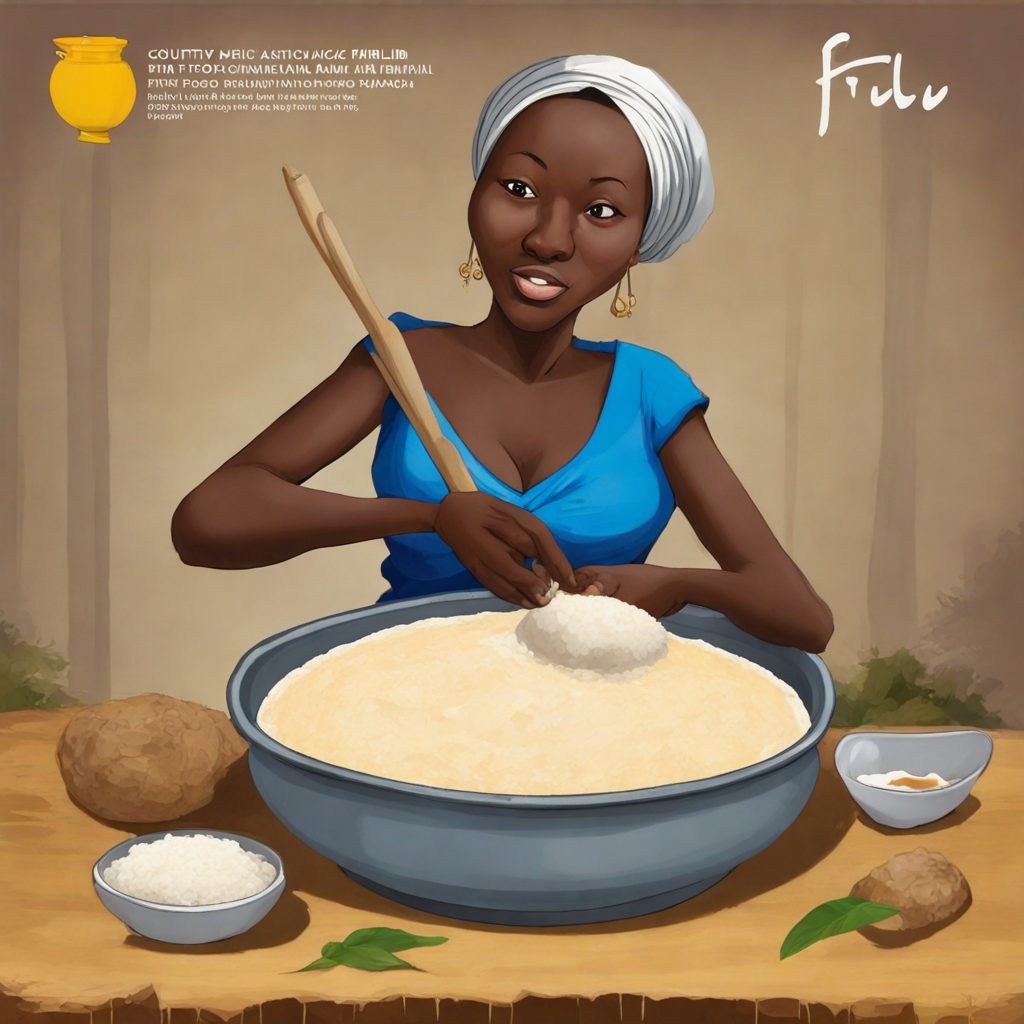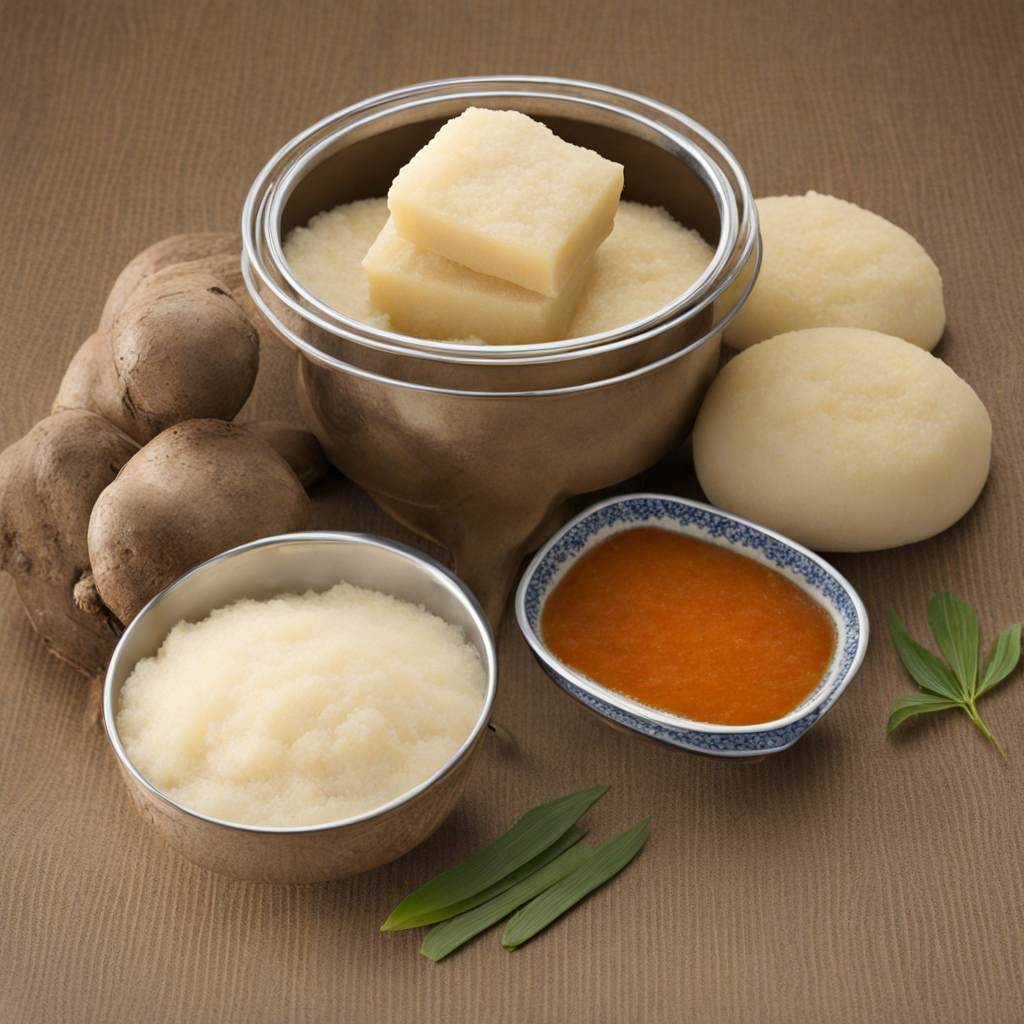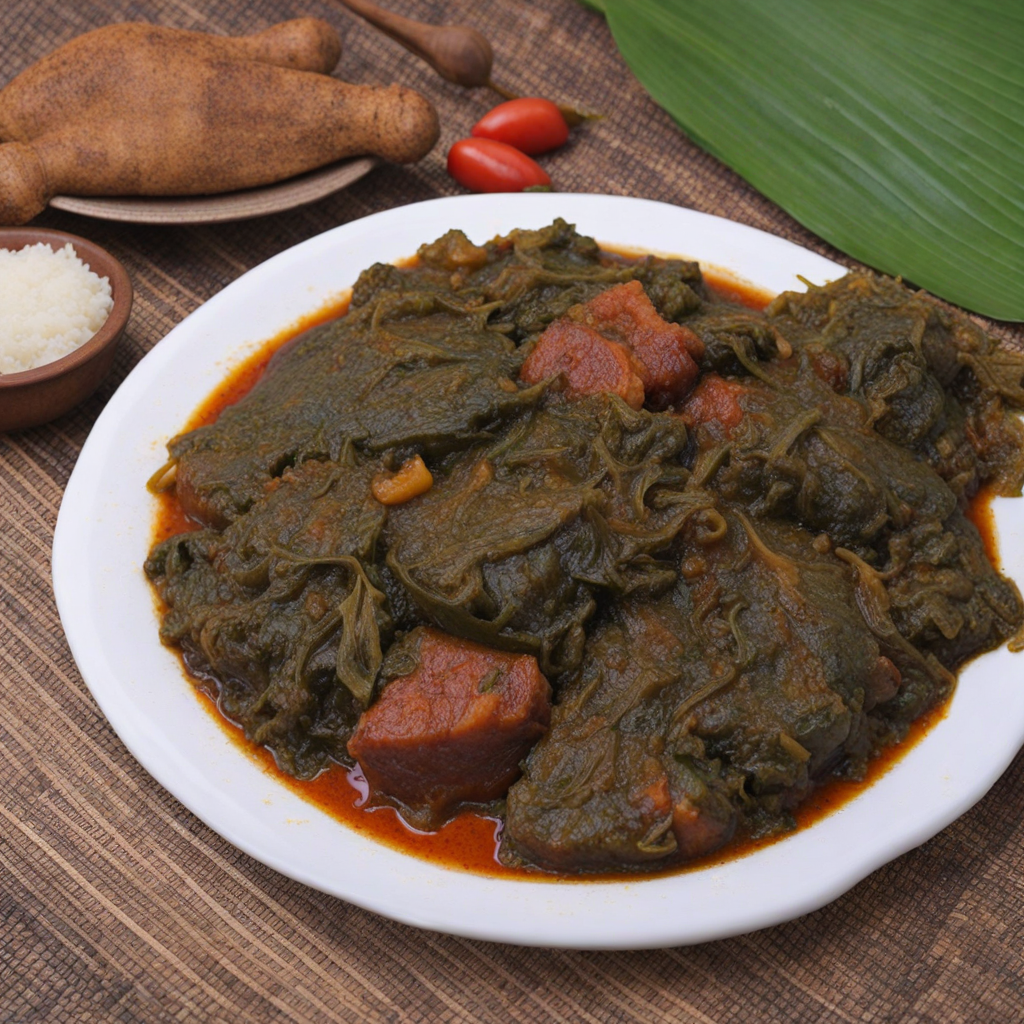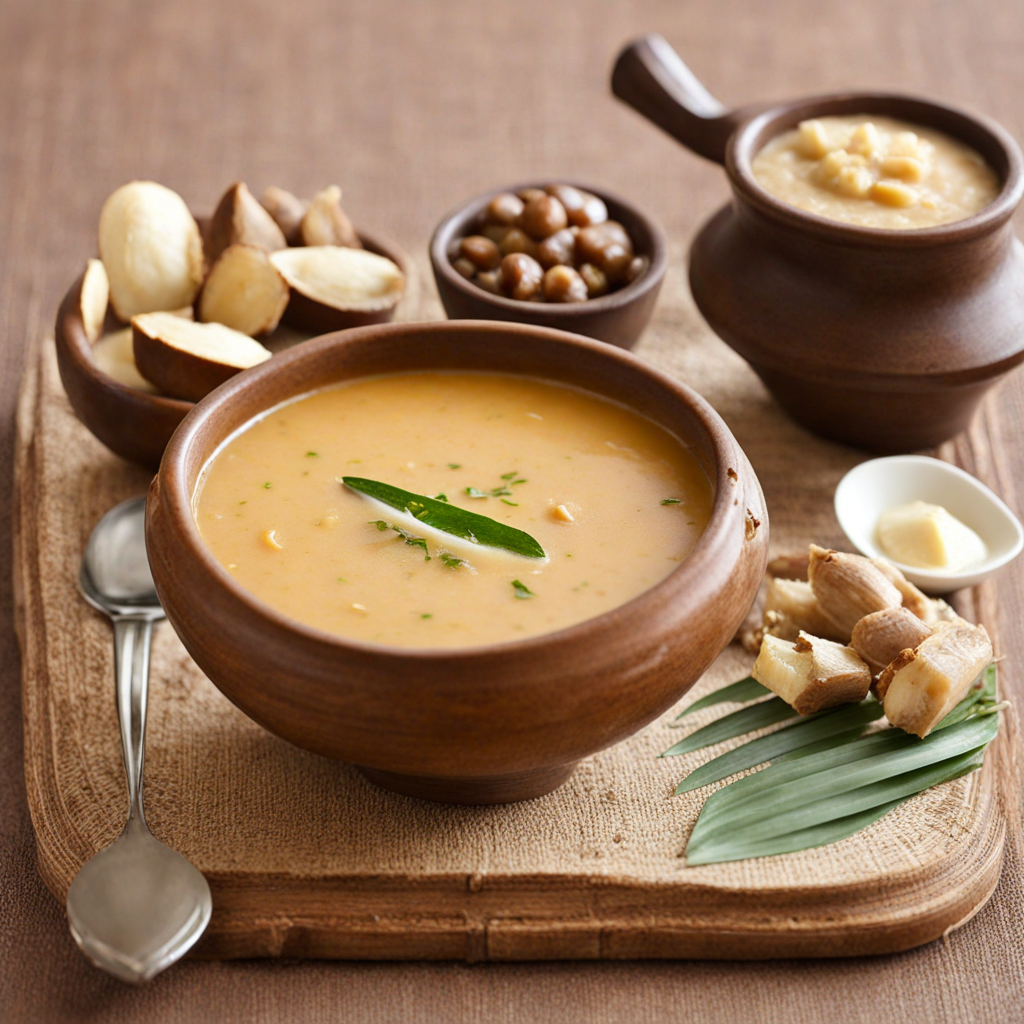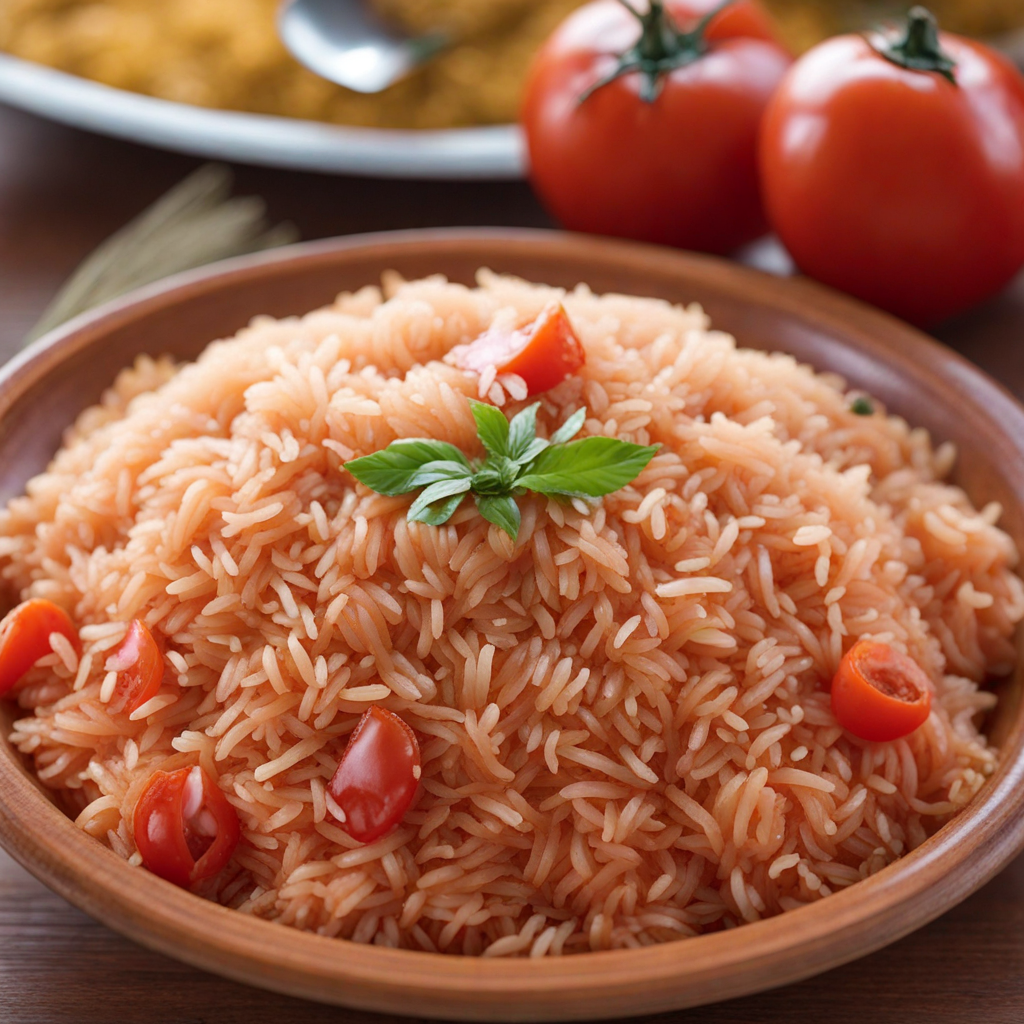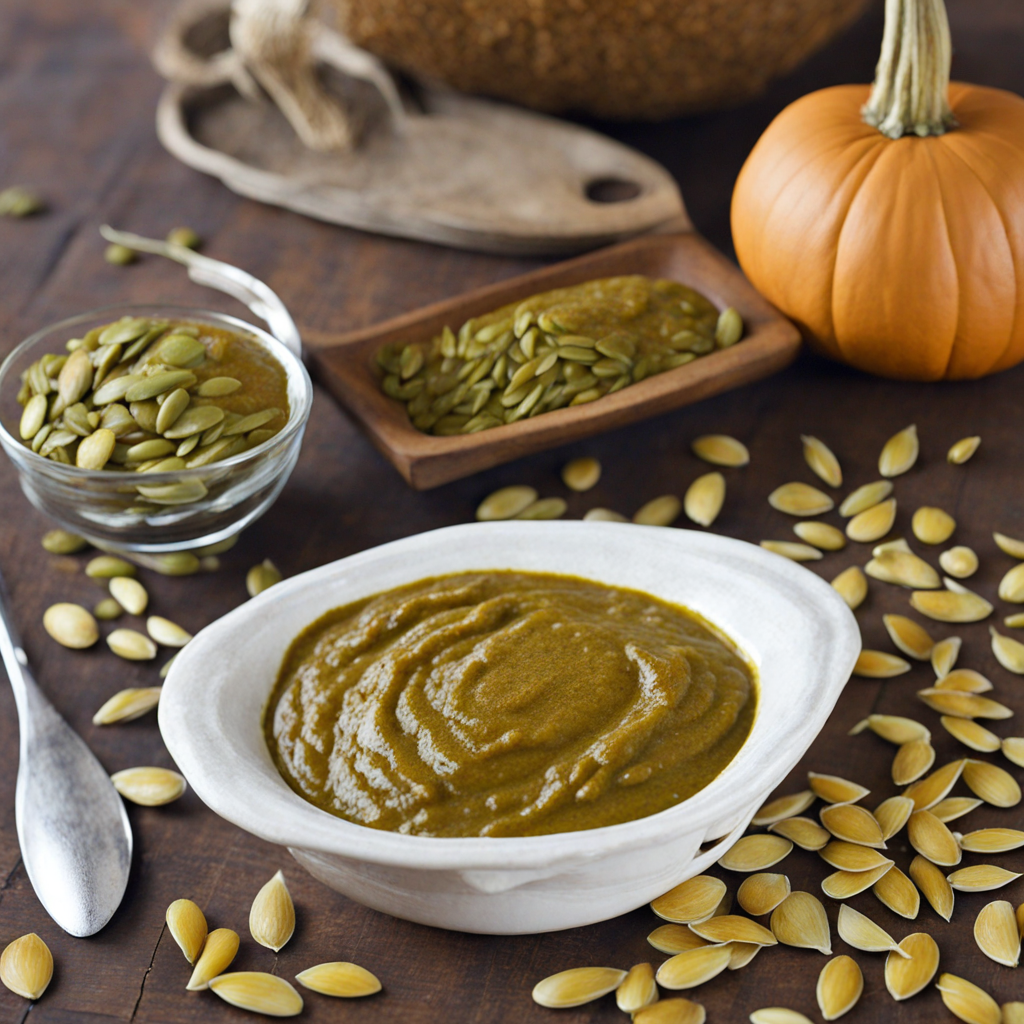Fufu
Fufu is a unique and delightful dish that has its roots in various African cultures, including the Central African Republic. This starchy staple is typically made from cassava, yams, or plantains, which are cooked, pounded, and formed into a smooth, stretchy dough-like consistency. The texture is both pliable and slightly elastic, making it an exciting addition to any meal. Fufu is often served as a side dish, providing a neutral base that complements the vibrant flavors of the rich sauces and stews it's paired with. Its mild flavor allows it to absorb the spices and seasonings of the dishes it accompanies, enhancing the overall dining experience. In the Central African Republic, fufu is traditionally enjoyed with local favorites such as groundnut stew or savory vegetable sauces, which may include ingredients like okra, tomatoes, and an array of spices. The dish is typically eaten by hand, with diners tearing off pieces of fufu to scoop up the flavorful sauces, making for an interactive and communal dining experience. This method of eating not only emphasizes the cultural significance of sharing meals but also allows one to fully appreciate the texture of the fufu as it melds with the rich, hearty flavors of the accompanying dishes. Fufu holds a special place in the hearts of many in the Central African Republic, as it embodies both tradition and nourishment. It's often served during family gatherings, celebrations, and important cultural events, symbolizing unity and togetherness. For those looking to explore new tastes, fufu offers a delightful journey into the world of Central African cuisine, inviting you to savor its comforting texture and the robust flavors of the sauces that bring this beloved dish to life.
How It Became This Dish
The Engaging History of Fufu: A Culinary Staple of Central Africa Fufu is a cherished staple food widely consumed across various regions in Africa, especially in Central and West Africa. This starchy dish, typically made from cassava, yams, or plantains, has a rich history that intertwines with the cultural, social, and economic fabrics of the communities that cherish it. In the Central African Republic (CAR), fufu serves not merely as a food item but as a symbol of identity, tradition, and communal bonding. #### Origins of Fufu The origins of fufu can be traced back to ancient agricultural practices in West and Central Africa, where tubers and starchy vegetables were cultivated. While fufu itself is a term that may have different meanings and preparations across various cultures, its fundamental characteristics remain consistent: it is a soft, dough-like food that accompanies soups, stews, and sauces. In the Central African Republic, fufu is often made from cassava, a root vegetable native to South America but introduced to Africa in the 16th century through the transatlantic slave trade. Its adaptability to various soil types and climates made it an ideal crop for African farmers, leading to its widespread cultivation. Over time, the indigenous populations began to incorporate fufu into their diets, and it became a staple food that could sustain communities and support their livelihoods. #### Cultural Significance Fufu holds immense cultural significance in the Central African Republic, where it is often associated with communal meals and social gatherings. Traditionally, fufu is prepared in large quantities, making it ideal for sharing among family and friends. The process of making fufu is often communal, involving multiple family members working together to peel, boil, and pound the cassava or other starchy ingredients into a smooth, elastic dough. This communal effort fosters bonds and strengthens relationships among community members. In many Central African households, fufu is a daily food, representing nourishment and sustenance. It is typically served alongside rich, flavorful sauces, often made from groundnuts, vegetables, and meat, enhancing the meal's nutritional value. The act of eating fufu is often accompanied by specific customs and rituals, reflecting the deep-rooted traditions of the culture. For instance, it is customary to use one’s hands to eat fufu, a practice that connects individuals to their food and promotes a sense of togetherness. Moreover, fufu is not just a symbol of sustenance; it also carries spiritual significance in many communities. It is often featured in rituals and celebrations, marking important life events such as weddings, births, and harvest festivals. Fufu, served in abundance during these occasions, symbolizes prosperity, fertility, and community solidarity, reinforcing its position as a food woven into the very fabric of Central African cultural identity. #### Development Over Time The historical trajectory of fufu reflects the broader socio-economic changes in the Central African Republic and the African continent at large. During the colonial period, the introduction of new agricultural practices and the imposition of cash crop economies altered traditional food systems. While fufu remained a staple, its preparation and consumption began to adapt to changing circumstances. In modern times, urbanization has influenced the ways in which fufu is produced and consumed. With a growing population migrating to urban areas in search of better opportunities, there has been an increased demand for convenience foods. As a result, fufu has evolved into various forms, including pre-packaged or instant varieties that can be prepared quickly. While these modern adaptations have made fufu more accessible to urban dwellers, they have also raised concerns about the loss of traditional preparation methods and the communal aspects of food making. Despite these changes, fufu has maintained its cultural relevance. It is regularly featured in restaurants and homes alike, bridging the gap between tradition and modernity. The dish serves as a reminder of the rich history and traditions of the Central African people, even as they navigate the challenges of contemporary life. #### Global Recognition In recent years, there has been a growing interest in African cuisines, with fufu gaining recognition beyond its traditional boundaries. Chefs and food enthusiasts around the world are increasingly exploring the flavors and techniques associated with fufu, incorporating it into fusion dishes that celebrate the uniqueness of African culinary heritage. This global acknowledgment has provided an opportunity for Central African food culture to shine on the international stage, allowing fufu to be appreciated not just as a local dish but as a culinary marvel with a rich history. #### Conclusion Fufu is more than just a food in the Central African Republic; it is a representation of identity, community, and resilience. Its evolution from a simple starchy staple to a symbol of cultural heritage highlights the importance of food as a reflection of social and historical contexts. As communities continue to navigate the complexities of modern life while honoring their traditions, fufu remains a constant—a comforting, nourishing food that binds people together. The story of fufu is a testament to the enduring power of culinary traditions, illustrating how food can transcend time and space, connecting generations and cultures through the shared experience of eating.
You may like
Discover local flavors from Central African Republic


